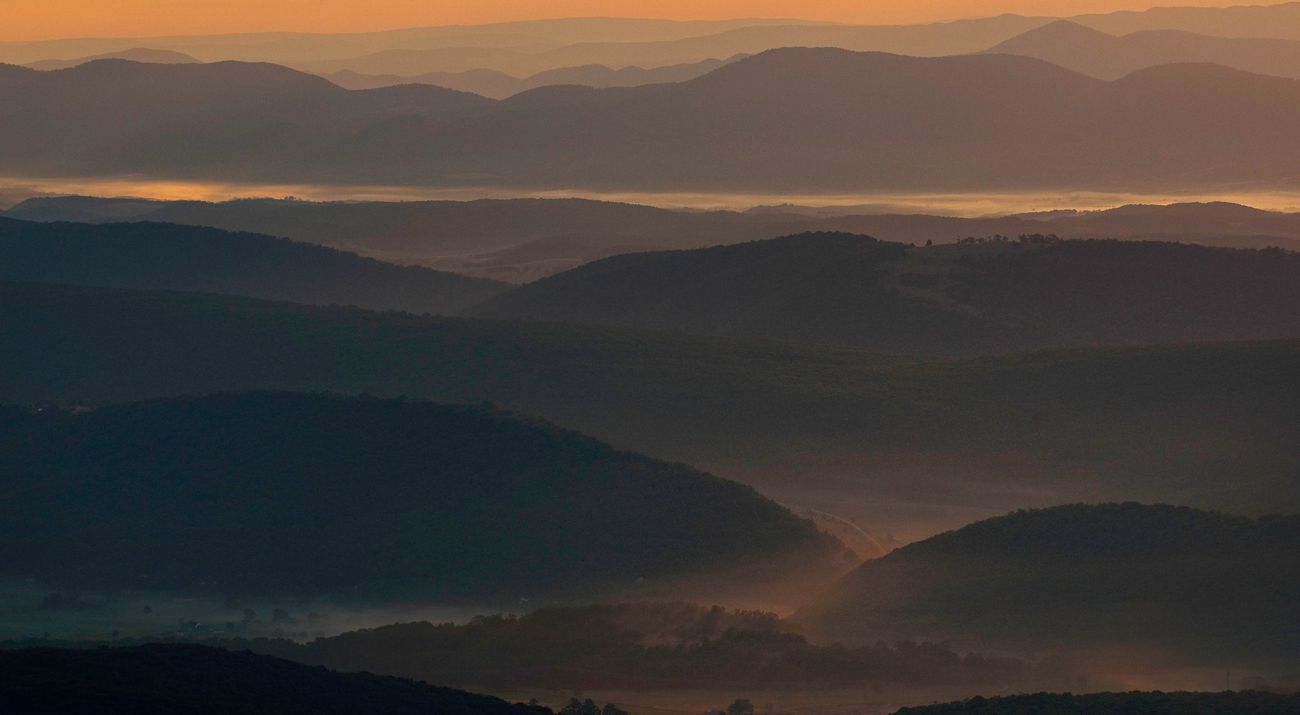Outlook on Energy: Pipeline Q&A
Our approach to natural gas pipeline proposals in Virginia.
The Nature Conservancy is deeply engaged in efforts to avoid and minimize the impacts that natural gas pipeline construction could have on the forests and rivers of the Central Appalachian mountains, tidewater Virginia, the Albemarle Sound and the coastal plain of North Carolina. Each of these regions harbor globally significant natural resources that are longstanding conservation priorities for the Conservancy.
We talked with Senior Conservation Scientist Judy Dunscomb about TNC's concerns about two specific proposed pipelines—Atlantic Coast and Mountain Valley—and our approach to working with project developers, and state and federal regulatory and land managing agencies.
What concerns does The Nature Conservancy have about the proposed pipelines?
TNC is in a similar position to many landowners. The pipeline projects stand to affect not only our preserves, but also the natural systems that we are working to protect. That is why we provided information to project developers on the location and nature of resources that should be avoided and have had many conversations with state and federal regulators, land managing agencies, and other conservation groups about how to ensure that the environmental review process is thorough and effective.
The Federal Energy Regulatory Commission (FERC) approved both the Mountain Valley (MVP) and the (ACP) in October 2017. The approved route of the MVP would bisect a conservation easement held by The Nature Conservancy near Roanoke, Virginia.
We received this easement as a donation from the landowner who wanted to see the headwaters of Bottom Creek, a wild trout stream whose cold, clear waters provide habitat for a great diversity of fish, including three rare species, protected in perpetuity. The language of the easement prohibits activities like excavating that would be necessary if the pipeline were to be constructed across the property. The pipeline would also cross the headwaters of Bottom Creek, resulting in permanent changes to the temperature regime and very likely increasing the amount of sediment that enters the stream.
What are you doing to address those concerns? How has TNC worked with the companies behind the pipeline projects?
The Nature Conservancy is the one of the few organizations that can work across state and ecological boundaries to focus on avoiding loss of critically imperiled habitats and on protecting and restoring lands to compensate for such impacts. As soon as we learned of the proposed projects in 2014, we met with the pipeline developers to urge significant modifications of their plans based on our specific concerns across the pipeline routes.
We have created maps of critical habitats to aid the goal of ensuring irreplaceable resources are avoided and other ecological impacts minimized. We made these maps accessible online so that energy companies could use them in the earliest stages of siting projects.
Throughout the environmental review process, TNC filed 14 letters on the record with FERC and other Federal and State agencies with regulatory roles for environmental review and permitting. In these filings, we consistently argued that:
- All preserves, easements, and critical habitats for conservation be avoided;
- Impacts to other habitats that could not be avoided be minimized to the greatest possible extent, and;
- Any remaining impacts be effectively compensated for.
We asked MVP to avoid our conservation easement. At our request FERC directed MVP to develop a route alternative that would avoid the easement. Unfortunately, FERC determined that it would be “environmentally preferable” to construct the route across the Bottom Creek easement.
Are TNC preserves or easements directly affected by either of the pipeline projects? If so, what are you doing to protect your conservation investments?
Yes. The MVP, as approved by FERC, would bisect a conservation easement held by the Conservancy on Poor Mountain. The area under easement includes the headwaters of Bottom Creek and the purpose of the easement is “to ensure that the property will be retained in its natural, scenic, and forested condition; to protect any rare plants, animals, or plant communities on the property; and to prevent any use that will significantly impair or interfere with the property’s conservation values or interests.” On November 13, 2017, we filed requests for a rehearing of FERC’s Order, and for a stay of the effectiveness of that order.
Also on November 13, 2017, The Nature Conservancy was served with a notice of condemnation over its easement. Among the authorities granted to MVP under the Order is the right of eminent domain, which is the power to take any private land needed for the pipeline’s construction. We are retaining counsel to respond to the condemnation action.
Why does TNC work to influence energy companies, including pipeline developers? Why not just oppose pipelines?
TNC's unique and proven role is to pursue dialogue with all interested parties and stakeholders. Our experience has shown this approach keeps doors open, does not shut us out of the process, and allows TNC to work with partners to achieve the best possible conservation outcome.
Energy development is an incredibly complex and challenging issue. Given the realities of current gas prices, and emerging regulations on greenhouse gas emissions, we expect that some amount of new pipeline infrastructure will likely be built in our region.
We believe that any new permitted pipelines must meet certain criteria; for example, they should demonstrate public need, advance energy efficiency and reduce greenhouse emissions. The focus of our efforts is to ensure that irreplaceable resources are avoided entirely, while other ecological impacts are minimized, and full compensation for those impacts required.
At TNC, irreplaceable means rare, threatened or endangered species that have nowhere else to go. It also includes the best remaining intact habitats that support the native biological diversity of our region, including continuous ribbons of floodplain forests, caves and sinkholes, and large intact forests.
Why should the industry work with you?
There is a benefit for energy companies and developers to do so. Incorporating science based environmental information into their plans early on makes it more likely that they can resolve conflicts before they become business problems.
How is TNC working with the government agencies involved?
We have provided extensive comments to the Federal Energy Regulatory Commission (FERC) regarding the Environmental Impact Assessments for both the Mountain Valley and Atlantic Coast pipelines.
Among our many requests was for FERC to include four pipeline projects in a Programmatic Environmental Review process. We made this request in person in a meeting with the FERC chairman.
We also met with USDA representatives to seek their support for that proposal, as well as to encourage the U.S. Forest Service to hold a strong line to ensure that no pipeline route could be approved that contradicts National Forest Land and Resource Management Plans.
We continue to encourage state and federal agencies to fully implement the mitigation hierarchy with respect to these projects, that is, only after impacts are avoided and then minimized to the fullest extent possible is it appropriate to consider how to offset the remaining impacts.
What is your hope for similar projects in the future?
We hope to see an approach of “avoid – minimize – compensate” become the new normal for energy projects in Virginia. Our hope is that energy companies will understand the value of incorporating nature into their plans, take environmental concerns into consideration from the outset, and recognize the benefits of addressing concerns early and openly.
We Can’t Save Nature Without You
Sign up to receive monthly conservation news and updates from Virginia. Get a preview of Virginia's Nature News email

